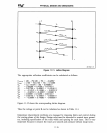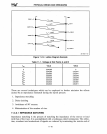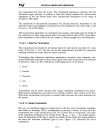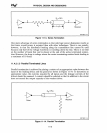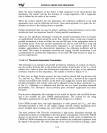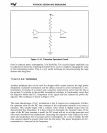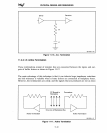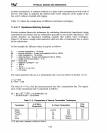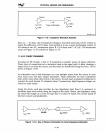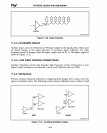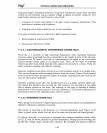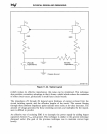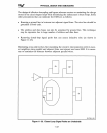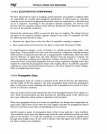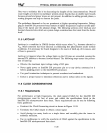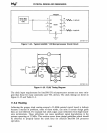
PHYSICAL DESIGN AND DEBUGGING
L=g"
Trace
Is
Microstrip
231732i11-18
Figure 11-18. Impedance Mismatch Example
Since Zs =
10
ohms, the termination techniques described previously will be needed to
match the difference of
45.6 ohms. One method
is
to use a series terminating resistor of
45.6 ohms or use A.C. termination where
R=55.6
ohms and C=O.3
J.,LF.
The terminated
circuit of Figure
11-18
is
shown in Figure 11-19.
11.4.2.2 DAISY CHAINING
In laying out PC boards, a stub or T-connection
is
another source of signal reflection.
These types of connections act
as
inductive loads in the signal path. In daisy chaining, a
single trace
is
run from the source, and the loads are distributed along this trace. This
is
shown
in
Figure
11-20.
An
alternative
way
to this technique
is
to run multiple traces from the source to each
load. Each trace will have unique reflections. These reflections are then transmitted
down other traces when they return to the source. In such cases a separate termination
is
required for each branch. To eliminate these T-connections, high-frequency designs are
routed
as
daisy chains.
Along the chain, each gate provides its own impedance load, thus it
is,
necessary to
distribute these loads evenly along the length of the chain. Hence, the impedance along
the chain
will
change in a series of steps and it
is
easier to match. The overall speed of
this line
is
faster and predictable.
231732i11-19
Figure 11-19. Use of Series Termination to Avoid Impedance Mismatch
11-23



